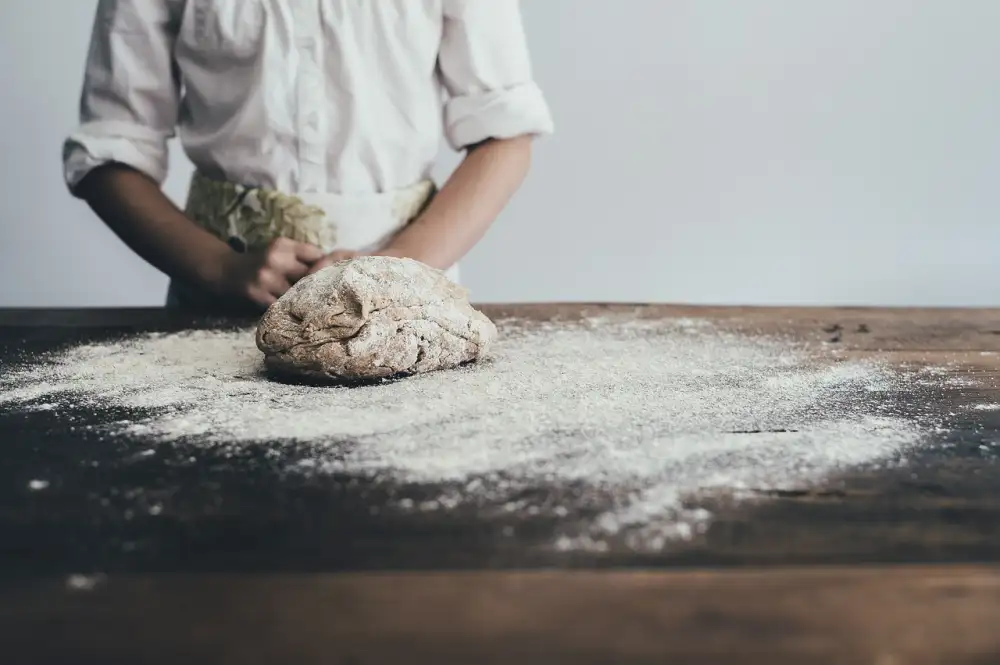Preserve Freshness: Unlock the Secrets of Freezing Bread with These Essential Tips

Freezing bread is a simple and effective way to preserve its freshness and extend its shelf life. Whether you have leftover bread or want to stock up on your favorite loaves, freezing is a convenient method that allows you to enjoy fresh bread anytime. By understanding the proper techniques and tips for freezing bread, you can unlock the secrets to preserving its taste, texture, and aroma. So, let's dive into the world of freezing bread and discover how it can revolutionize your culinary adventures.
Benefits of freezing bread
Freezing bread offers numerous benefits. Firstly, it allows you to extend the shelf life of your favorite bread, preventing it from going stale or moldy. This means you can buy bread in bulk or bake a large batch and freeze the extra loaves for future use. Secondly, freezing bread helps to preserve its freshness and taste. When properly frozen, bread retains its flavor and texture, so you can enjoy a delicious slice even after weeks in the freezer. Lastly, freezing bread is a convenient way to always have fresh bread on hand. Simply thaw a loaf whenever you need it, and you'll never have to worry about running out of bread again.
Choosing the right bread for freezing
When it comes to freezing bread, not all types are created equal. Some breads freeze better than others, so it's important to choose the right kind for optimal results. Generally, breads with a denser texture and less moisture content freeze well. This includes white bread, whole wheat bread, sourdough, and French baguettes. Avoid freezing delicate or soft breads like brioche or croissants as they may become soggy or lose their texture when thawed. By selecting the right bread for freezing, you can ensure that your frozen loaves will taste just as delicious as fresh ones when thawed.
Preparing the bread for freezing
Preparing the bread for freezing is an important step to ensure its quality and freshness. Start by allowing the bread to cool completely after baking or purchasing. This will prevent condensation from forming inside the packaging. Next, slice the bread into individual portions or leave it whole, depending on your preference. If you're slicing the bread, make sure each slice is of uniform thickness to ensure even freezing and thawing. Lastly, wrap the bread tightly in plastic wrap or aluminum foil to protect it from freezer burn and moisture loss. Label each package with the date of freezing for easy identification later on.
Proper packaging for frozen bread
Proper packaging is essential when it comes to freezing bread. To preserve its freshness and prevent freezer burn, it's important to use airtight packaging. The best option is to wrap the bread tightly in plastic wrap or aluminum foil, ensuring there are no air pockets. Alternatively, you can place the bread in a resealable freezer bag, squeezing out as much air as possible before sealing it. Remember to label the package with the date of freezing for easy reference later on. By using proper packaging techniques, you can ensure that your frozen bread stays fresh and delicious for an extended period of time.
Freezing and storing bread
Freezing and storing bread is a simple process that ensures your bread stays fresh for longer periods. Once you have properly prepared and packaged your bread, it's time to freeze it. Place the packaged bread in the freezer, making sure to leave some space between each loaf or slice. This will allow for even freezing and prevent the bread from sticking together.
It's important to note that freezing can affect the texture of bread, so it's best to consume frozen bread within three months for optimal taste and quality. To store frozen bread, keep it in a freezer-safe bag or container to protect it from freezer burn.
Organizing your freezer is also essential when storing bread. Make sure to label each package with the date of freezing, so you can easily keep track of its freshness. Store older loaves towards the front of the freezer, allowing you to use them first.
By following these steps, you can enjoy freshly baked bread whenever you desire without worrying about waste or staleness. Freezing and storing bread is a convenient method that allows you to savor the flavors of life at your own pace.
Thawing and enjoying frozen bread
Thawing and enjoying frozen bread is a simple process that allows you to enjoy the taste and texture of freshly baked bread anytime. When it comes to thawing, it's important to do it properly to preserve the quality of the bread. The best way to thaw frozen bread is by letting it defrost at room temperature. Place the frozen loaf on a wire rack or a clean kitchen towel and let it sit for a few hours until completely thawed. Avoid using heat sources like microwaves or ovens as they can make the bread dry and tough. Once thawed, you can enjoy your bread as if it was freshly baked!
Tips and tricks for freezing bread
1. Slice before freezing: To make it easier to thaw and use, slice the bread before freezing. This way, you can take out only the slices you need without having to thaw the whole loaf.
2. Use airtight containers: When packaging your bread for freezing, make sure to use airtight containers or freezer bags. This will prevent any moisture from getting in and keep your bread fresh.
3. Label and date: Don't forget to label your frozen bread with the type of bread and the date it was frozen. This will help you keep track of what you have in your freezer and ensure you use it before it gets too old.
4. Freeze in individual portions: If you prefer smaller portions, freeze your bread in individual servings. This way, you can easily grab a single slice or roll whenever you need it.
5. Avoid refreezing: Once you have thawed your frozen bread, try to avoid refreezing it. The texture and taste may be affected, so it's best to consume it within a few days.
6. Consider pre-slicing bagels: If you enjoy having bagels for breakfast, consider pre-slicing them before freezing. This way, you can easily pop them into the toaster straight from the freezer.
By following these tips and tricks, you can ensure that your frozen bread stays fresh and delicious for longer periods of time. Enjoy the convenience of having freshly baked bread at your fingertips whenever you want!
By following these essential tips and tricks, you can now enjoy fresh bread anytime with the convenience of freezing. Whether you have leftover bread or want to stock up on your favorite loaves, freezing is a great way to preserve their freshness and flavor. Remember to choose the right bread for freezing, prepare it properly, and package it correctly to ensure optimal results. With proper storage and thawing techniques, you can savor the flavors of freshly baked bread even after it's been frozen. So go ahead, stock up on your favorite loaves, and unlock the secrets of freezing bread to enjoy a taste of freshness whenever you desire.
Published: 22. 01. 2024
Category: Recipes



